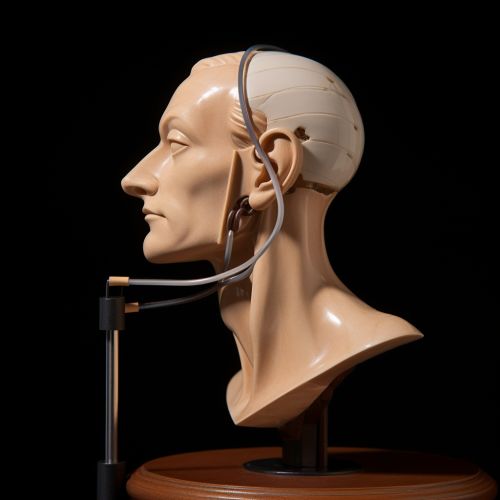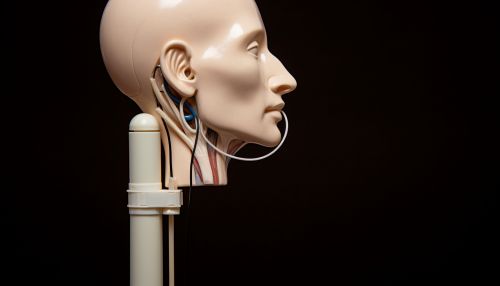Eustachian tube
Anatomy
The Eustachian tube, also known as the auditory tube or pharyngotympanic tube, is a structure in the human body that connects the middle ear to the nasopharynx, which consists of the upper throat and the back of the nasal cavity. It is approximately 3.5 centimeters in length and is named after the sixteenth-century anatomist Bartolomeo Eustachi who discovered it.


The Eustachian tube is responsible for equalizing pressure in the middle ear. When functioning properly, the tube opens to allow air to pass from the nasopharynx to the middle ear, thereby ensuring that the pressure is equal on both sides of the eardrum. This is crucial for the normal transmission of sound waves to the inner ear.
Function
The primary function of the Eustachian tube is to ventilate the middle ear space, ensuring that its pressure remains at near normal ambient air pressure. The secondary function is to drain any accumulated secretions, infection, or debris from the middle ear space. Several small muscles located in the back of the throat and palate control the opening and closing of the tube. Swallowing and yawning cause these muscles to activate and help to regulate Eustachian tube function.
Clinical Significance
Dysfunction of the Eustachian tube can lead to pathologies such as otitis media, barotrauma, tinnitus, and hearing loss. Otitis media is an infection or inflammation of the middle ear. This condition can occur if the Eustachian tube becomes blocked, preventing the normal drainage of fluid from the middle ear, which can lead to the buildup of bacteria and viruses.
Barotrauma refers to injury caused by a change in air pressure, affecting primarily the ear and the lung. Barotrauma of the ear (also known as airplane ear) is caused by a dysfunction of the Eustachian tube. It could occur due to rapid changes in altitude, as experienced during an airplane takeoff or landing, or when scuba diving.
Tinnitus is the perception of noise or ringing in the ears. It is a common problem and can occur as a result of age-related hearing loss, ear injury, or a disorder in the circulatory system. Eustachian tube dysfunction can also lead to tinnitus.
Treatment
Treatment for Eustachian tube dysfunction depends on the cause and severity of the symptoms. In some cases, treatment may not be necessary, and the condition will improve on its own. In other cases, treatment options may include medications, such as nasal decongestants, antihistamines, or nasal steroids. If the Eustachian tube dysfunction is caused by an infection, antibiotics may be prescribed. In severe cases, surgery may be required to treat the condition.
